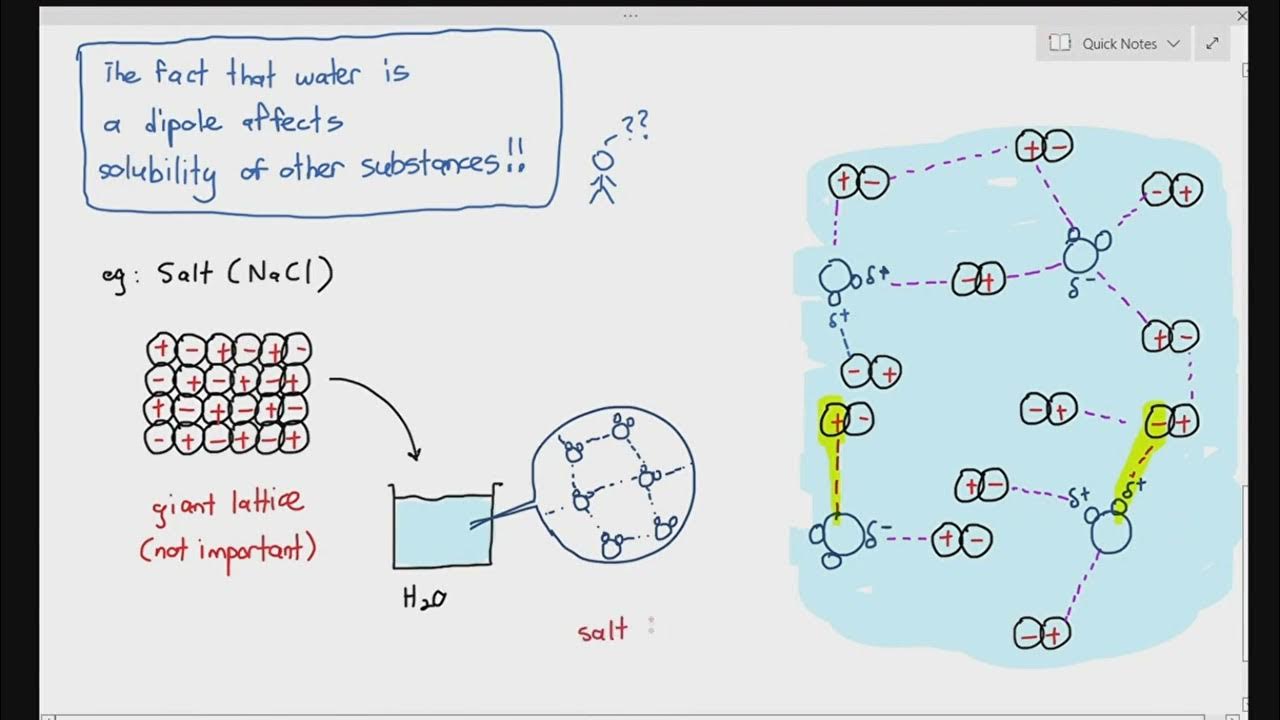Lipids | Fats, Steroids, and Phospholipids | Biological Molecules Simplified #4
Summary
TLDRThis video offers an engaging introduction to lipids, explaining their role as macromolecules made of hydrocarbon chains, which give them a non-polar, water-insoluble nature. The video covers various types of lipids, including triglycerides (used for energy storage), phospholipids (key components of cell membranes), steroids (important for hormone production), and waxes (which help plants and animals repel water). The script also briefly touches on the diversity of fatty acids and their effects on the body, providing an informative overview of lipids' crucial functions in biology.
Takeaways
- 😀 Lipids are macromolecules made up of long hydrocarbon chains consisting of only hydrogen and carbon.
- 😀 Lipids are non-polar and not soluble in water, which is why substances like oil separate from water.
- 😀 The primary function of triglycerides, made up of three fatty acids and glycerol, is energy storage in the body.
- 😀 Fatty acids can be categorized into saturated, unsaturated, trans fats, and omega fatty acids, though details on these categories are not discussed in this video.
- 😀 Phospholipids are essential for forming the phospholipid bilayer, which protects cells from external threats.
- 😀 Phospholipids consist of two nonpolar fatty acid tails and a polar head, making them form a bilayer due to their interaction with water.
- 😀 Steroids are hydrophobic lipids that do not contain fatty acids but have four cyclic rings in their structure.
- 😀 Cholesterol and cortisol are examples of steroids that play important roles in the body, including as hormones.
- 😀 Steroid hormones like progesterone and testosterone are derived from cholesterol.
- 😀 Waxes are a type of lipid found in plant and animal structures, helping water repel off surfaces like feathers and leaves.
- 😀 The video provides a basic overview of lipids, leaving out discussions on soaps and detergents, but invites further exploration on the topic.
Q & A
What are lipids made of?
-Lipids are macromolecules made up of long hydrocarbon chains, which are composed exclusively of hydrogen and carbon.
Why are lipids considered non-polar?
-Lipids are non-polar because their long hydrocarbon chains do not have regions of positive or negative charge, making them insoluble in water.
How do lipids behave when mixed with water?
-Lipids do not mix well with water and tend to separate, which is why oil will form droplets and float on the surface of water.
What is a triglyceride, and what is its main function in the body?
-A triglyceride is a large molecule formed by three fatty acids bonded to glycerol, and its primary function in the body is energy storage, particularly in the form of fat or adipose tissue.
What is the difference between saturated and unsaturated fats?
-Saturated fats have no double bonds between carbon atoms, making them solid at room temperature, while unsaturated fats have at least one double bond, which makes them liquid at room temperature.
What role do phospholipids play in cells?
-Phospholipids are crucial for forming the phospholipid bilayer that makes up cell membranes, protecting the cell from outside intrusion and regulating the flow of substances in and out of the cell.
How do phospholipids form a bilayer?
-Phospholipids have two non-polar fatty acid tails that are attracted to each other and a polar head that is attracted to water. This structure causes them to arrange in a bilayer with the non-polar tails facing inward and the heads facing outward.
What are steroids, and how do they differ from other lipids?
-Steroids are a type of lipid that does not contain fatty acids but instead consists of four cyclic rings linked together. They are hydrophobic like other lipids but have a unique structure and function in the body.
What is the function of cholesterol and cortisol in the body?
-Cholesterol and cortisol are types of steroids that play important roles in the body, with cholesterol being essential for cell membrane structure and cortisol being involved in the stress response and metabolism regulation.
What are waxes, and where are they found?
-Waxes are a diverse group of lipids found in nature, such as in the feathers of some birds and the leaves of many plants, where they help prevent water loss by causing water to bead up and run off.
Outlines

此内容仅限付费用户访问。 请升级后访问。
立即升级Mindmap

此内容仅限付费用户访问。 请升级后访问。
立即升级Keywords

此内容仅限付费用户访问。 请升级后访问。
立即升级Highlights

此内容仅限付费用户访问。 请升级后访问。
立即升级Transcripts

此内容仅限付费用户访问。 请升级后访问。
立即升级浏览更多相关视频

1: Lipids: Definition, Classification, functions |Lipid Chemistry-1| Biochemistry

Lipids - Structure in cell membranes | Chemical processes | MCAT | Khan Academy

Carbohydrates: Polysaccharides | A-level Biology | OCR, AQA, Edexcel

2-7 What affects the solubility of a substance in water? (Cambridge AS & A Level Biology)

Fats and oils food science lecture

PHYSICAL SCIENCE - BIological Macromolecules
5.0 / 5 (0 votes)
